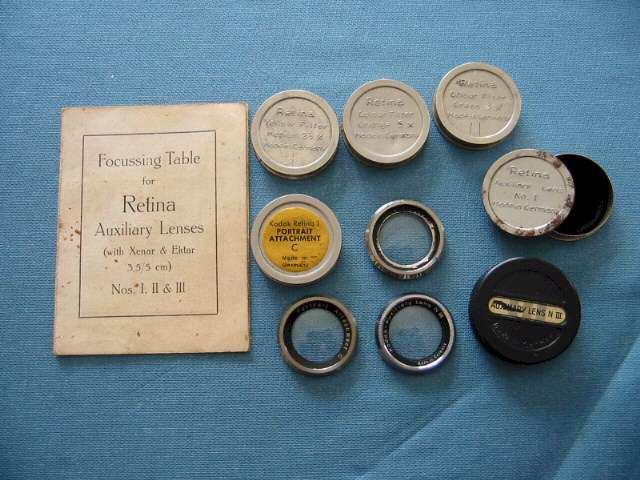Chris's camera pages
Retina camera accessories
Kodalux exposure meters
There are three different Kodalux meters in my collection, they can all be mounted in the accessory shoe.
The earliest type is not pictured here, it has a clip-on incident light diffuser, this is usually missing. The meter in the left of the picture is actually the second type, similar in design to the earlier model, but the diffuser is fixed on hinges, the last and smallest meter on the right has a diffuser that slides into place like the lid of a roll-top desk.
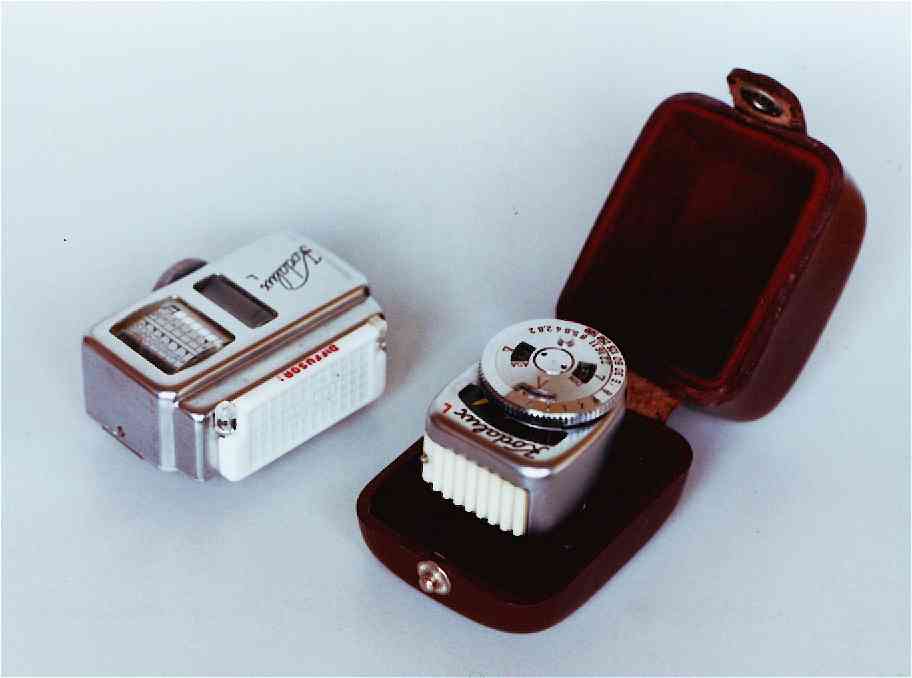
Optical 35mm/80mm finder for IIc & IIIc
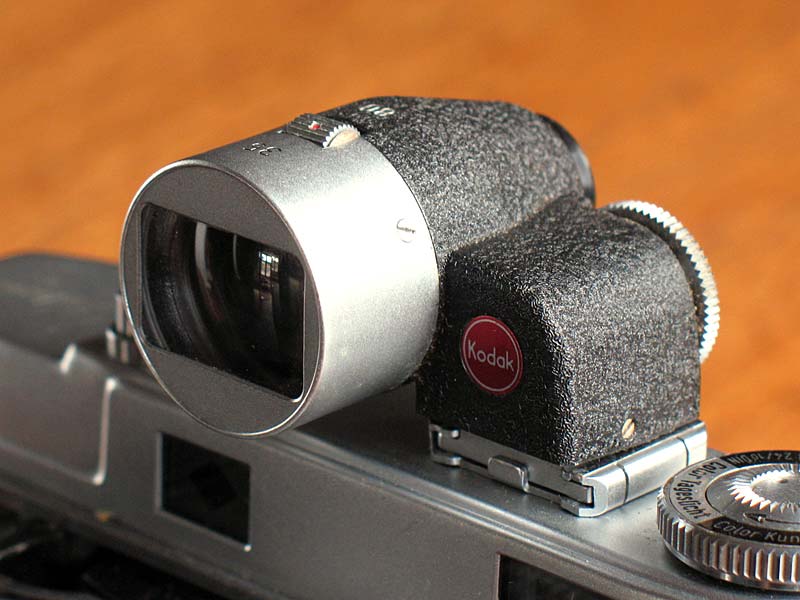
Here is the accessory 35mm/80mm optical finder for use on the Retina IIc and IIIc.( The later IIC and IIIC had frames visible in the viewfinder for these lenses and so did not need the accessory finder)
This finder does not change magnification to show the frame area but simply has an internal drop down mask that reduces the visible field to suit the 80mm lens.
The knurled wheel just visible at the rear of the finder is the parallax adjustment. As the dial is turned to a closer distance setting the finder tips downwards.
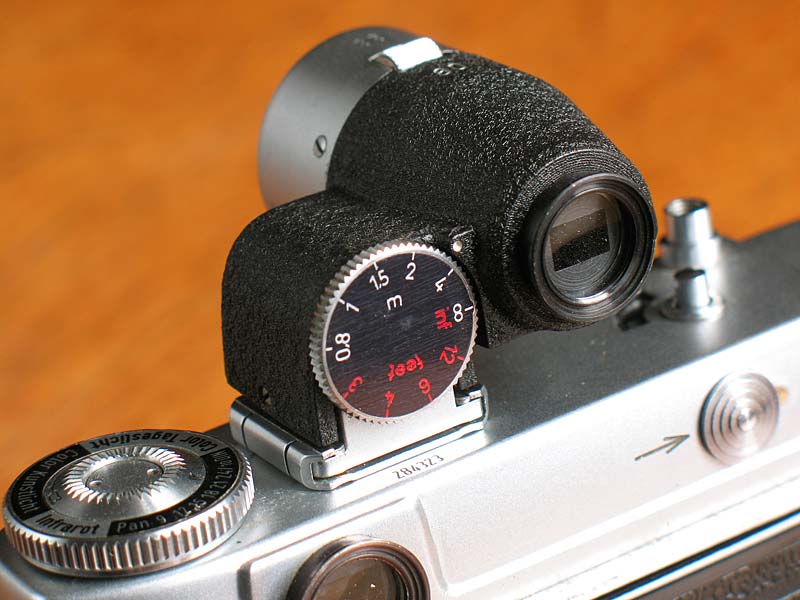
Frame finders
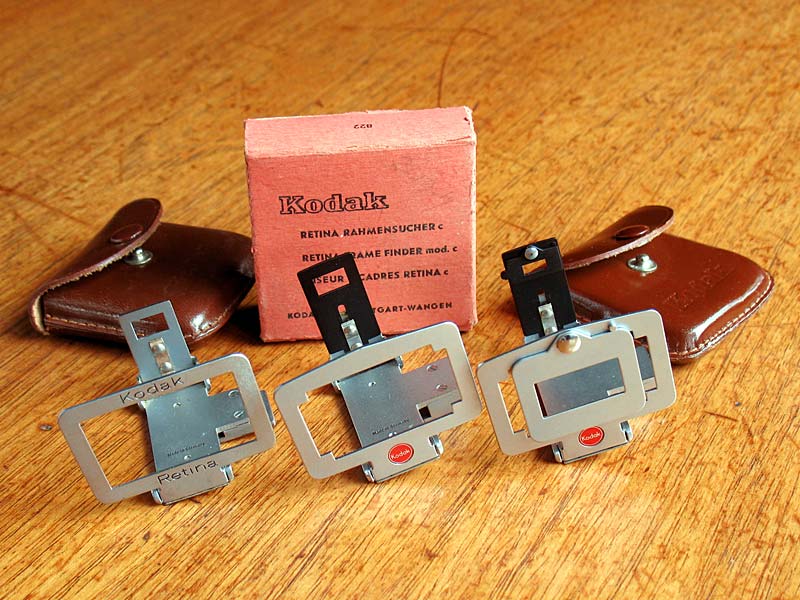
On the left of the picture is the an early frame finder usually referred to as the type "a", which covers only the field of view of the standard lens, this was current up to and including the Retina Ia and IIa models.
The type "b" frame finder was introduced for the Retina Ib, and the type "c" was introduced to suit the Retina IIc and IIIc. The type "c" finder also has smaller swing-down frames to suit the 80mm lens.
Each of these finders have a calibrated rear sight that can raised or lowered so as to compensate for parallax errors when working at close distances.
Right-angle finder
This finder fits the Retina IB, IIC & IIIC folders, the original Retina Reflex, the Reflex S, the Retina IIS & IIIS rangefinder cameras and the Automatic I, II, & III models. It does not fit earlier Retina cameras or the later cameras like the Reflex III & IV, Retina IF, IIF or IBS cameras except with the aid of an adapter, which unfortunately I do not have.
This finder allows a camera to be used as though fitted with a waist-level finder, and might be useful for very low-angle shots, or when a Retina Reflex camera is used with one of the copying accessories.
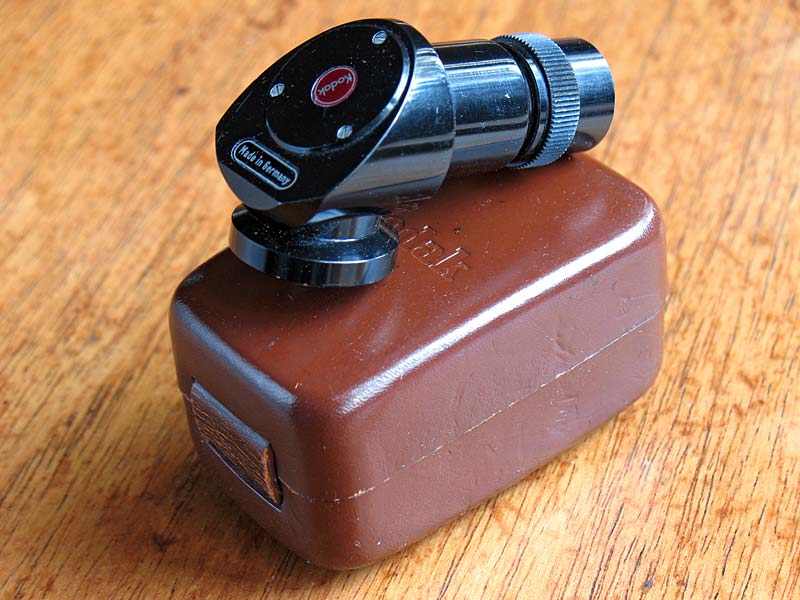
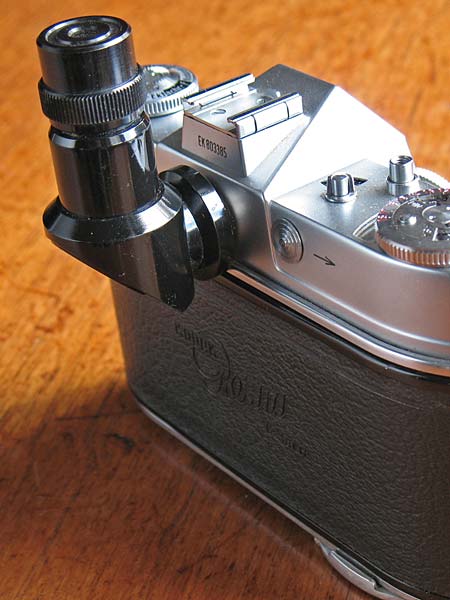
Close-up rangefinders
I have three close-up rangefinders here, the earlier one shown here was used up to, and including the Retina Ia and IIa models. This model is usually found complete with three "N" type close-up lenses. (NI, NII, and NIII)

The later types are very similar and were used for the Retina Ib, IIc, IIIc and later cameras. The more common model is for use with the 50mm standard lenses, the other is for use with the 45mm lenses used on some of the rigid bodied Retinas and Retinettes. They can be identified by the "f= 45" or "f= 50" marked clearly on the dial. These close-up rangefinders are usually found with only the NI and NII lenses. These two lenses were used combined to provide the equivilent of the NIII lenses.
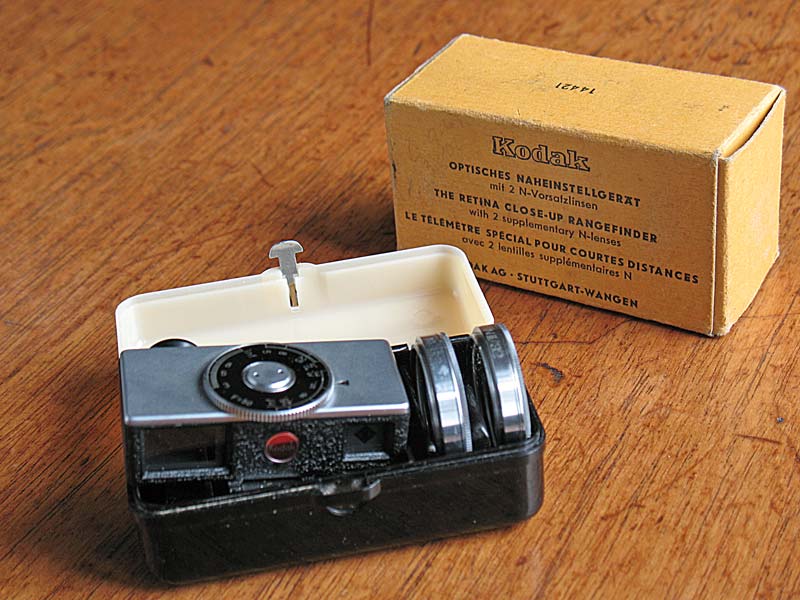
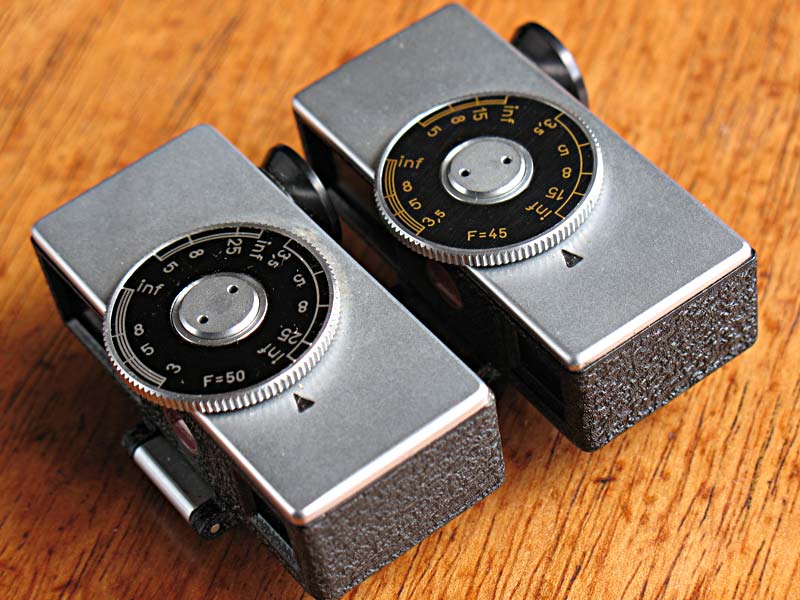
Retina Close-up rangefinder instructions.
Retina Copy Stand
The Retina Copy Stand consists of a camera holder and four adjustable legs.A glass plate was available, which fits to the ends of the legs, to hold documents flat.The lamp set makes a useful addition, giving virtually shadow-free lighting.
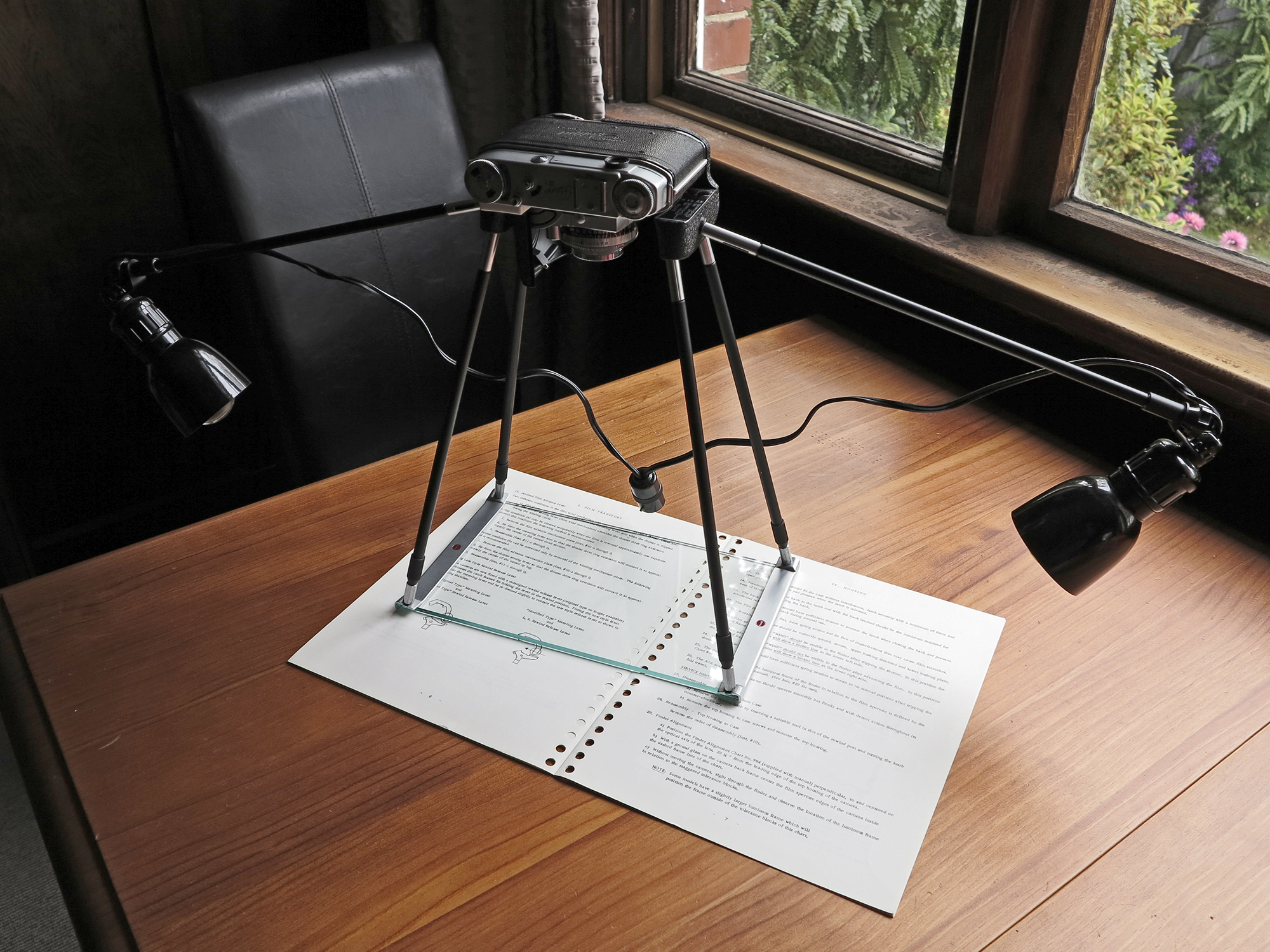
Lenses & their hoods
The most convenient hood for use with the Retina Ia or IIa is the black plastic push-on hood shown below. This hood will fit just as well with a filter as without. The filters for the Retina are fitted in a very narrow mount to make it possible to close the camera front with the filter in place. This means there is no provision to screw a hood into a filter.
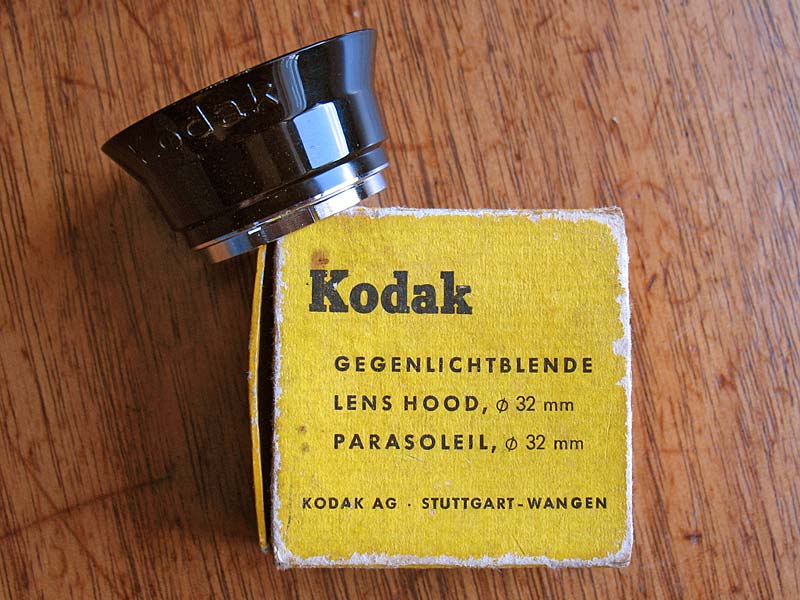
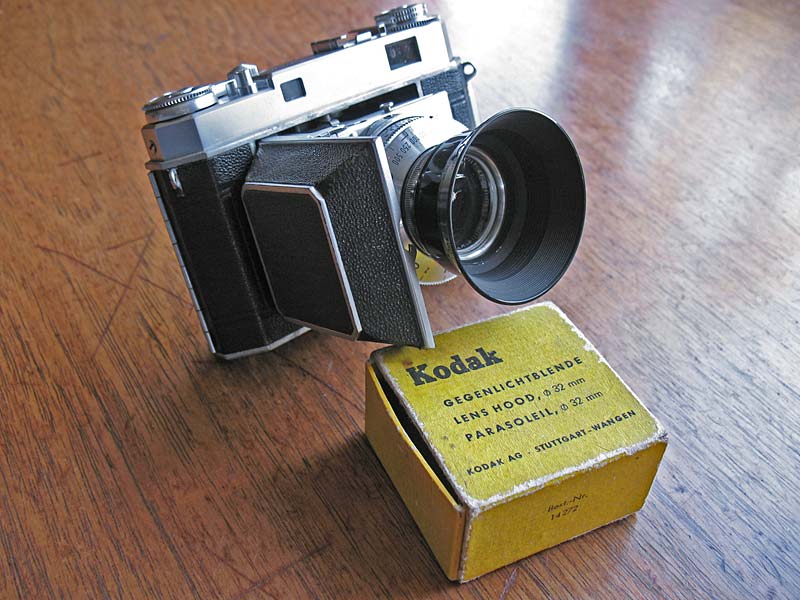
(In the US, for the Retina IIa, Kodak recommended using Kodak Series VI combination lens attachments with a Series VIA lens hood to clear the camera bed.)
The hood for the standard lens for the Retina Ib, IIc, IIIc, IB, IIC, IIIC & the original Retina Reflex camera is fixed by a bayonet-mount to the shutter housing around the lens itself.
This black plastic rectangular hood is marked "Kodak 50mm" and has tiny red dot on the side to align with that on the lens mount.
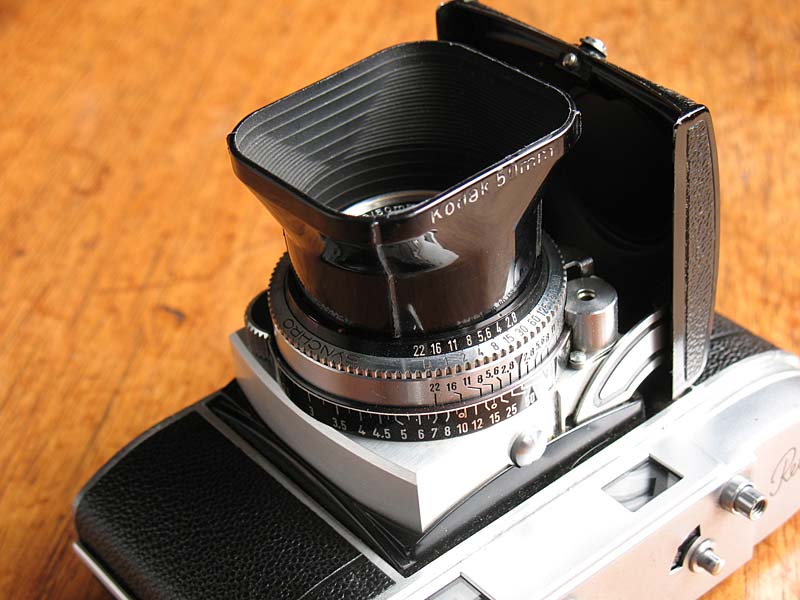
The smallest of the interchangable front lens components for the IIc, IIIc, IIC, IIIC cameras was the 35mm f/5.6 . This lens, like the other accessory lenses was available in either a Rodenstock or Schneider version to suit the standard lens fitted to the camera. (The two flavours are not interchangable and the mounts are keyed to prevent a Schneider front component being fitted to the Rodenstock equipped camera and vice-versa.)
This lens will also fit the original Retina Reflex, but the dim image would make it awkward to use. A later, larger aperture 35mm f/4 Retina-Curtar-Xenon or Rodenstock Retina-Heligon 35mm f/4 is better suited to the Retina Reflex.
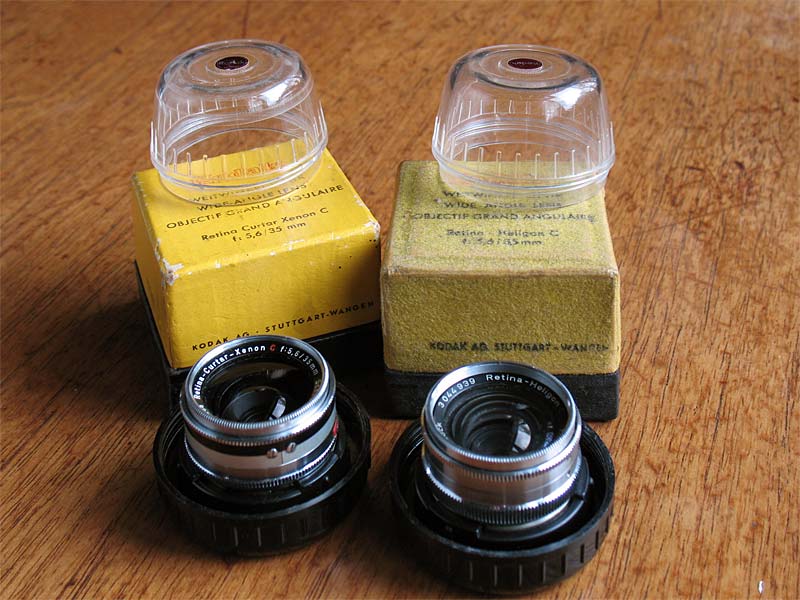
Here you can see just how small that wide-angle is...you may also notice in the picture, the special lens case for storing the standard lens while it is removed from the camera. As you may already know, it is not possible to close the front of the camera even with the tiny 35mm f/5.6 lens fitted.
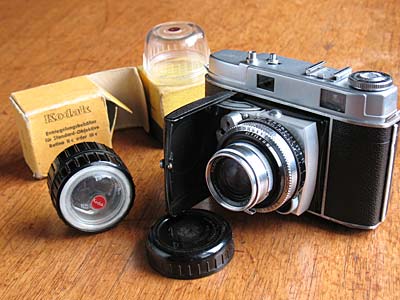
Here is that 35mm f/5.6 lens again, this time with the hood fitted....the proper hood is the standard hood as mentioned above, with an extension piece added to the front. This part is marked "Kodak 35mm".
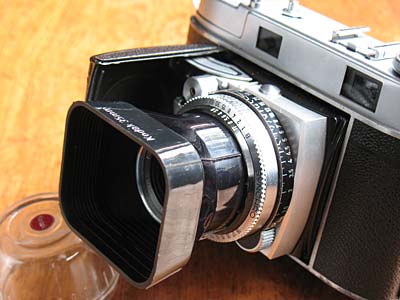
Here are the two more common lenses for these models, the Schneider 35mm f/4 Retina-Curtar-Xenon and the Schneider 80mm f/4 Retina-Longar-Xenon lenses. The Rodenstock equivilent lenses were the Retina-Heligon 35mm f/4 and Retina-Heligon 80mm f/4
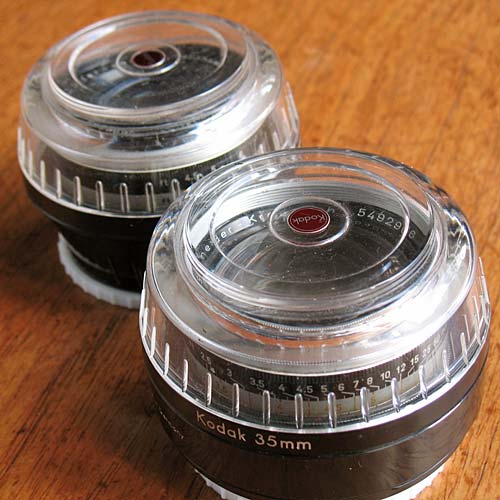
The bubble cases were formed from a top and base and the appropriate hood.
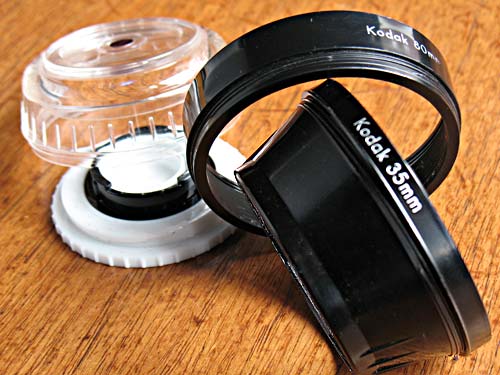
The 35mm f/4 Retina-Curtar-Xenon lens used just the single section of hood.
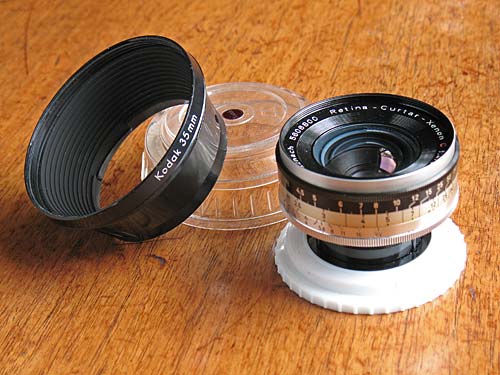
The 80mm f/4 Retina-Longar-Xenon lens used the 35mm hood with an extra section screwed onto the front.
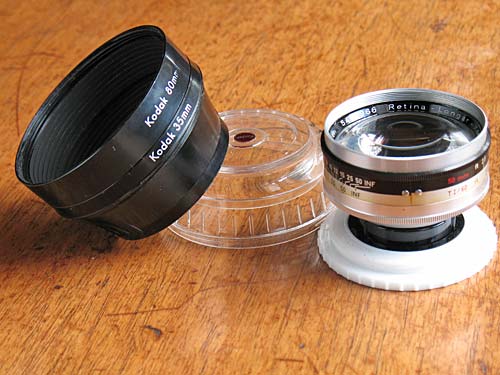

"S" series lenses are full interchangeable types unlike the earlier "C" type. Here you can see a 135mm f/4 and a 35mm f/2.8 lens for the Retina IIIS, Reflex S, Reflex III, Reflex IV, and Instamatic Reflex.
Here are some Retina I auxillary lenses, and the nickel-plated containers they came in. These probably date from around 1937.
